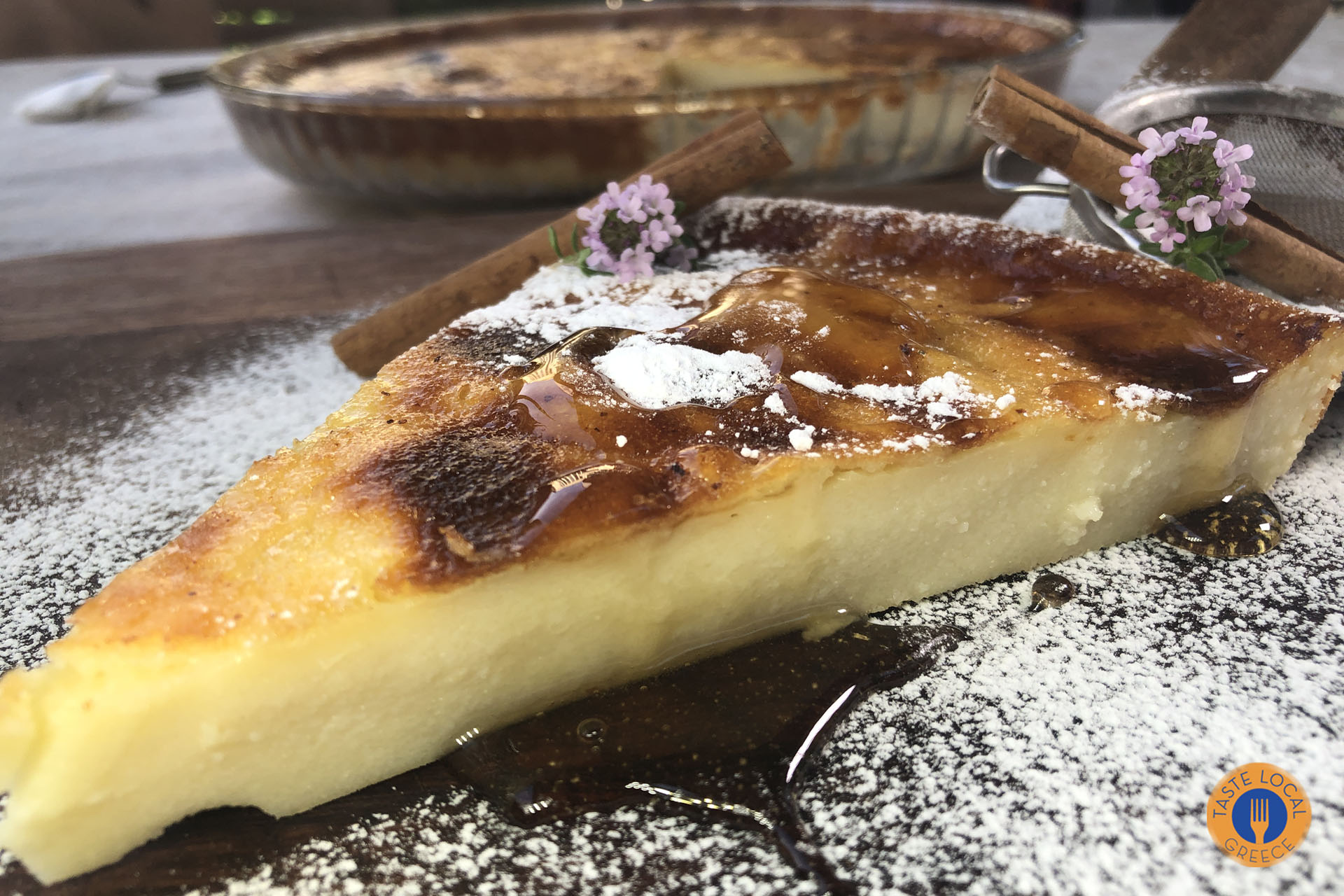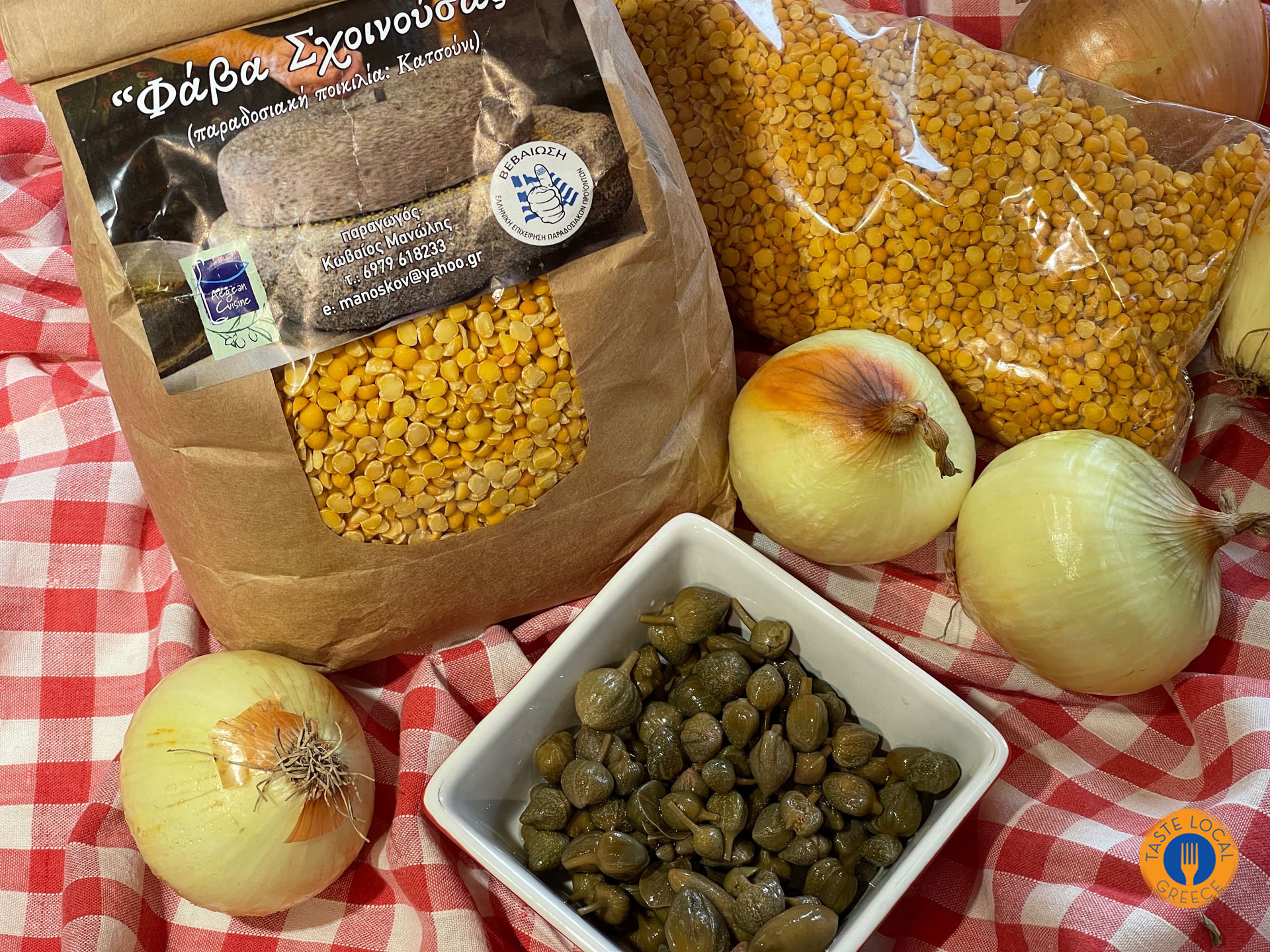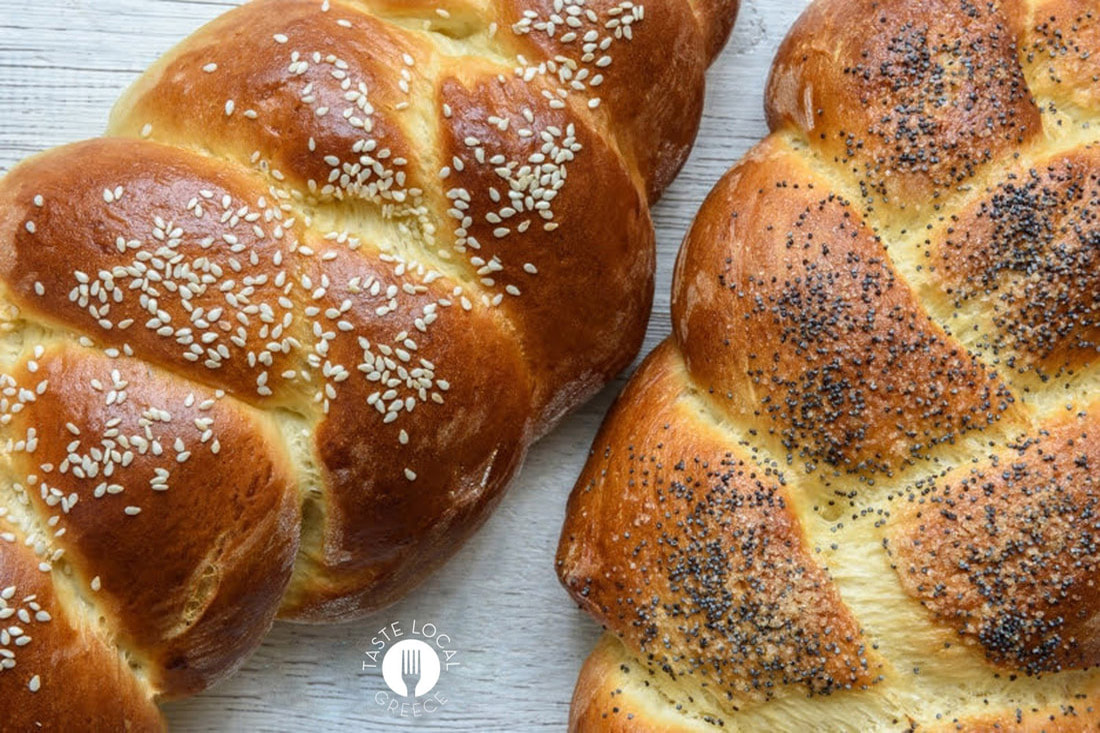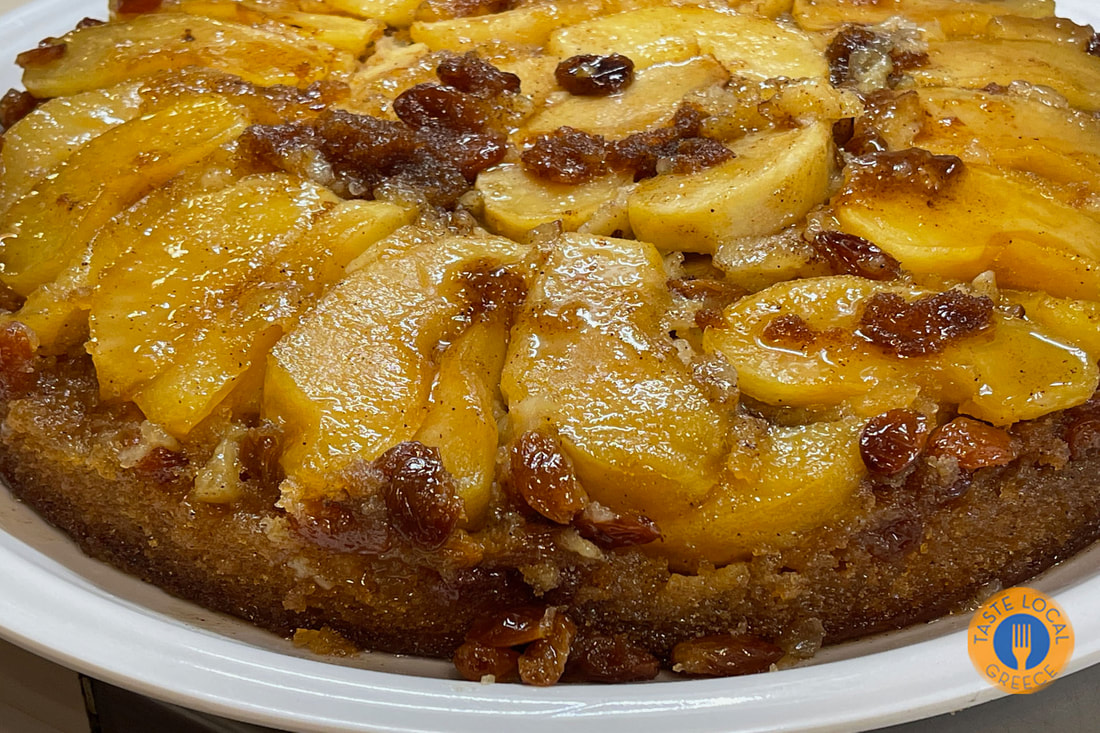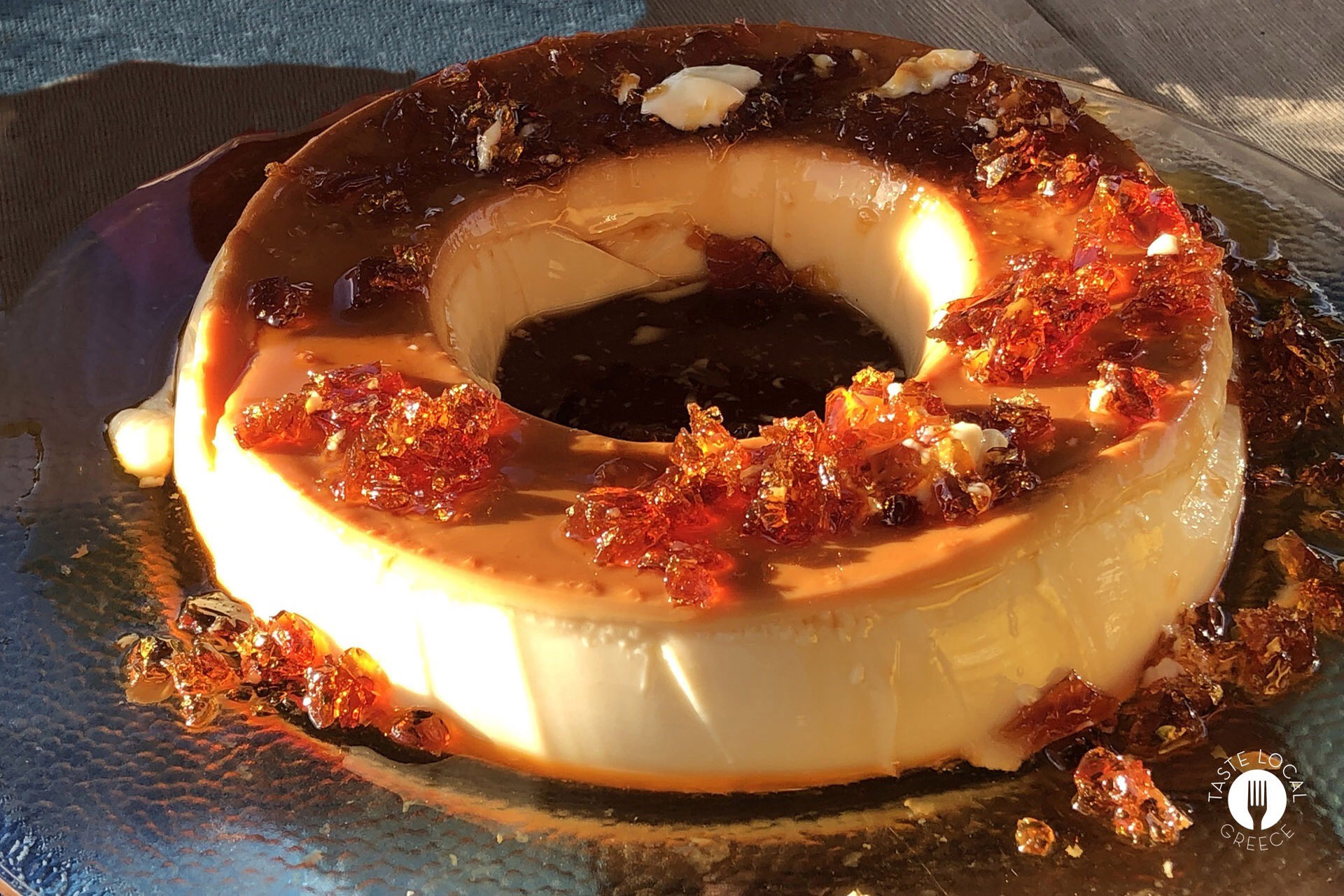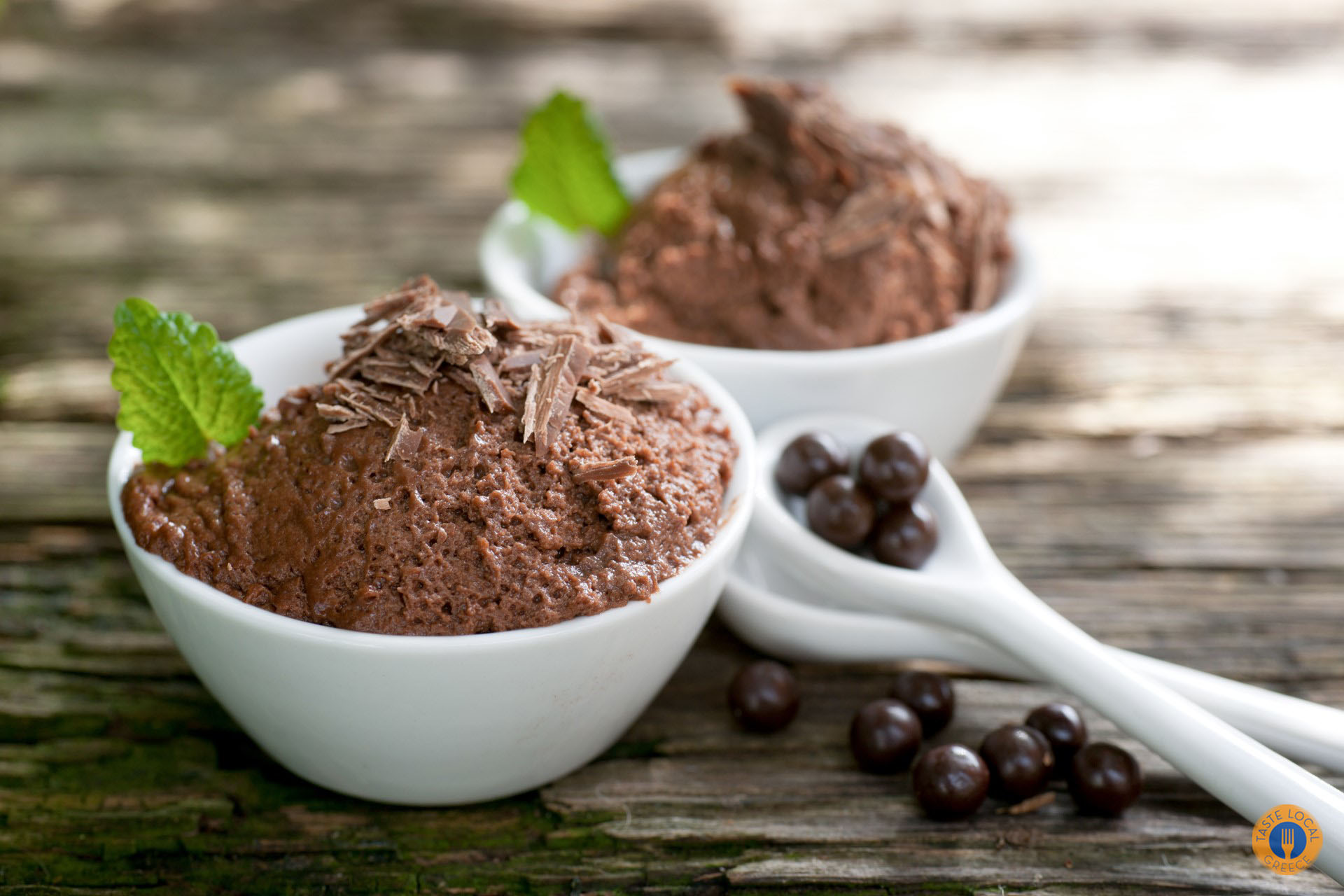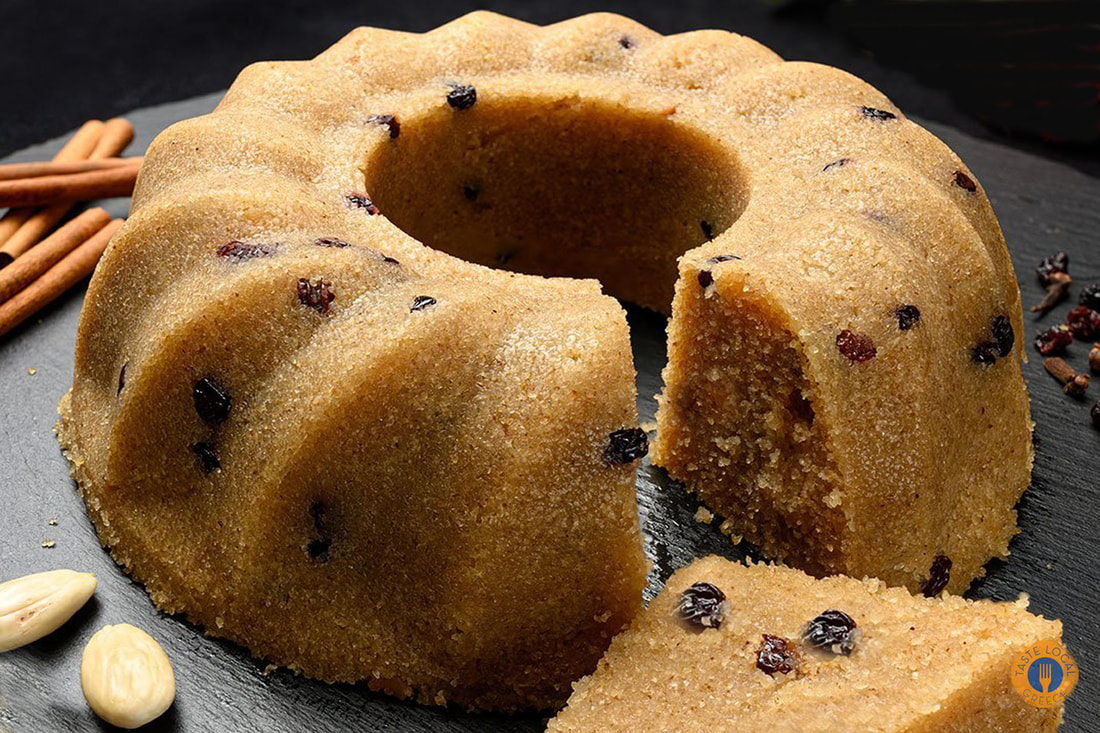This refers to the classic, custard-based milk pie from the Messinia region in the Peloponnese, Greece.
Galatopita, this wonderful traditional dessert, which many insist is an Easter specialty, has now become, I think, the beloved, easy, everyday dessert. Many of us consider it the go-to easy sweet for Sunday tables.
It is a specific request from the younger members of the family, aged six and eight, who—alongside creme caramel and the classic chocolate mousse, which no one can resist—keep it reigning supreme in the preferences at our family meals, even today!
Our galatopita was brought to me every Easter of my childhood by my grandmother, my father’s mother, a true Messenian from Kyparissia. Grandmother’s was always without pastry phyllo—because you will also find galatopita with phyllo on the bottom, or even with layers of phyllo above and below, with many variations from many places, depending on the region and the cook.
That flavor, from the milk, the butter, and the vanilla, that creamy custard which melted sweetly in the mouth, so close to the cream of a galaktoboureko, remained etched in my childhood taste preferences.

The recipe
The recipe for the traditional galatopita of Messinia is based on the best milk you can find—cow’s milk, or even better, goat’s milk for the authentic, traditional taste!
Back when our grandmother, Olga, used to make galatopita in Athens, milkmen still made their rounds. These were the ones who delivered fresh milk every morning to households in those iconic glass, returnable bottles, sourced from the small-scale dairy farmers of the time. A completely different taste…
Times have changed, those old flavors have been lost, but I believe that with a good quality, packaged goat’s milk today, you can still achieve very good tasting results!The second most important ingredient is the butter. The better the butter, the more the flavor will soar. So, get the best butter you can, even if it’s a bit more expensive..
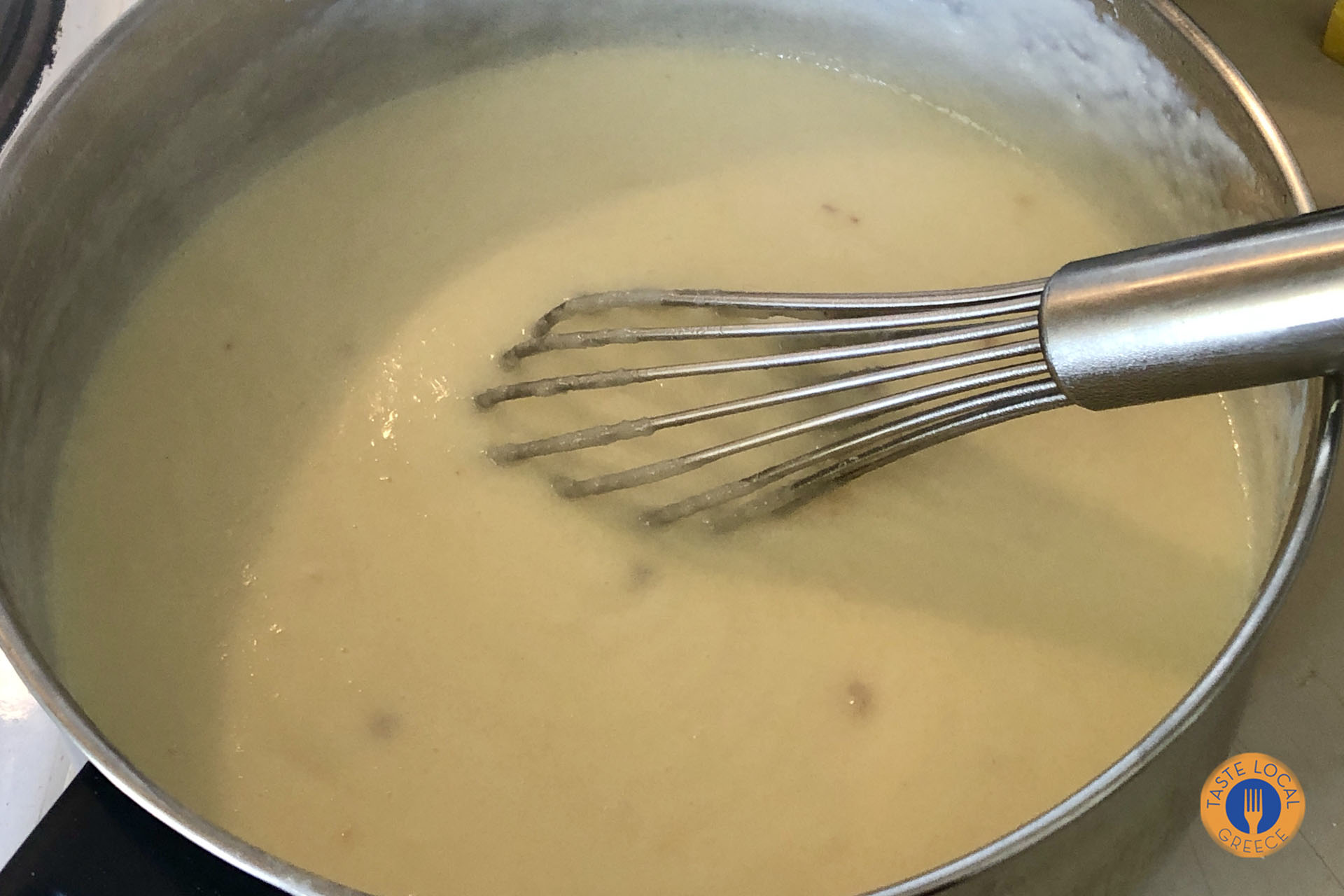
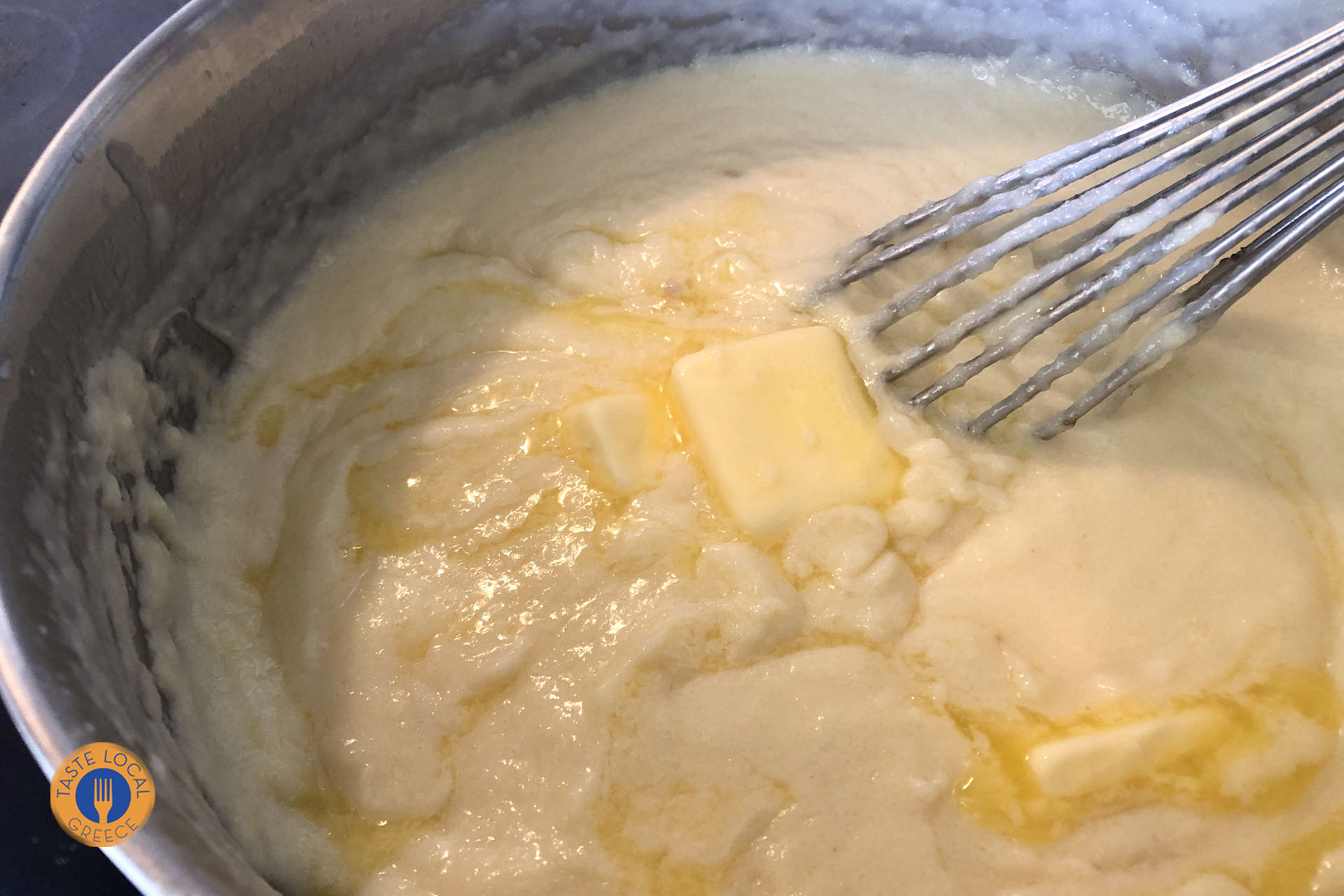
Ingredients for a classic 30 cm round Pyrex pie dish
1,200 ml goat’s milk
100 g butter + a little extra for greasing the tart pan
200 g sugar
100 g fine semolina + a little extra for the tart pan
30 g cornstarch
3 eggs
2 vanilla pods or 1 tsp vanilla extract
1 tsp salt
For the topping before baking
1 egg
2 tbsp water
4 tbsp sugar
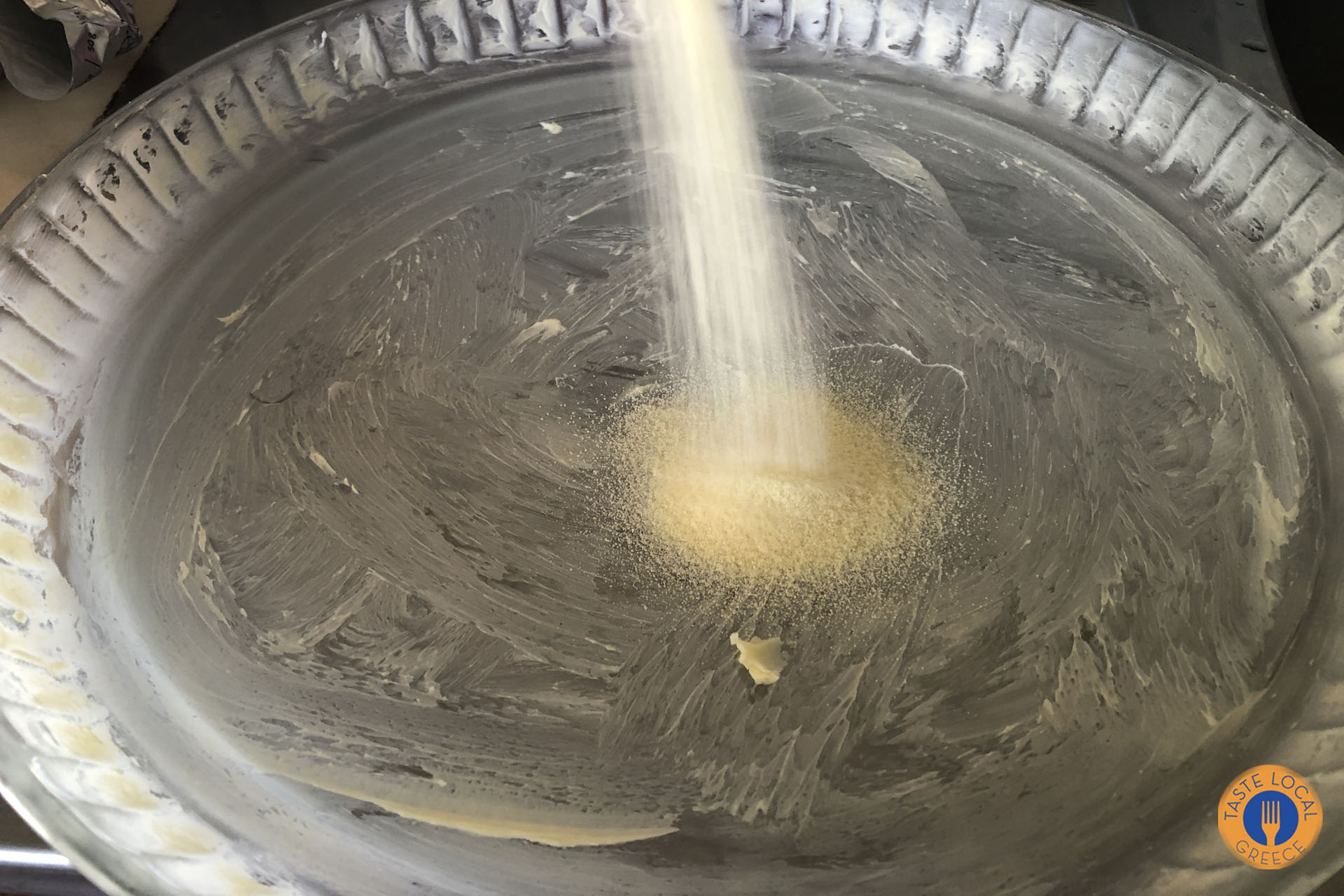
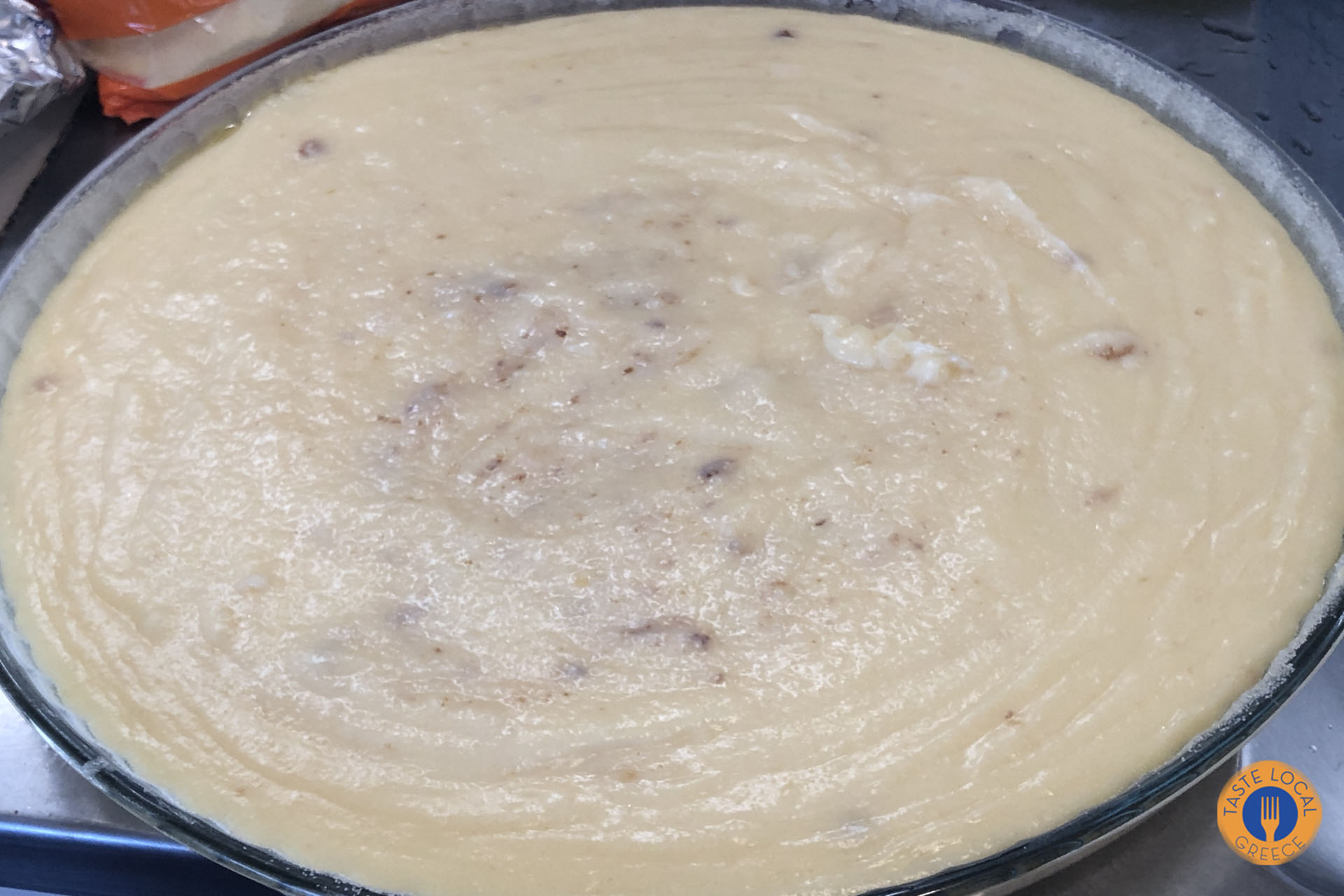

Preparation
Preheat the oven to 170°C using the heating elements (top and bottom heat). However, you can also try the convection/fan setting, but my oven doesn’t have that feature…
In a bowl, we combine the eggs, semolina, corn flour, salt, and vanilla. We mix them very well using a whisk or even a hand mixer. Over medium heat, we place the sugar and milk in a saucepan until they just come to a boil.
As soon as the milk boils, we add it spoonful by spoonful to the egg mixture, stirring constantly with the whisk. Finally, we transfer the entire egg and milk mixture back into the saucepan. We stir continuously until the custard thickens.
Remove it from the heat, add the butter, and stir until it melts.
Grease our Pyrex dish very well with butter.
Sprinkle in some semolina and tilt the dish in a circular motion so the semolina coats the entire greased surface, just like we do with cake pans.
We pour all the custard into the Pyrex dish and smooth the surface with a spoon.
Beat the egg with a tiny amount of water and brush it over the surface of the dessert using a pastry brush.
Then, we evenly sprinkle the four tablespoons of sugar over the entire surface.
We bake the traditional Messinian galatopita for about forty minutes, at 180 C depending on our oven’s strength.

Serving
The traditional galatopita of Messinia doesn’t need anything extra.
In recent years, it has become common to add powdered sugar. Or a good thyme honey and a very light sprinkle of cinnamon, which will give aromas of the East…
Personally, I like it slightly warm and plain, to enjoy the aromas of the butter and milk. But with a little powdered sugar and cinnamon, something like a bougatsa, it is also very good.

It is usually eaten at room temperature. Traditionally, in the old days when there wasn’t such abundance, it was eaten even before the lamb was roasted, to stave off hunger.
The dessert can of course be kept in the refrigerator for three to four days.
Although I don’t think there will be any left by the second day.
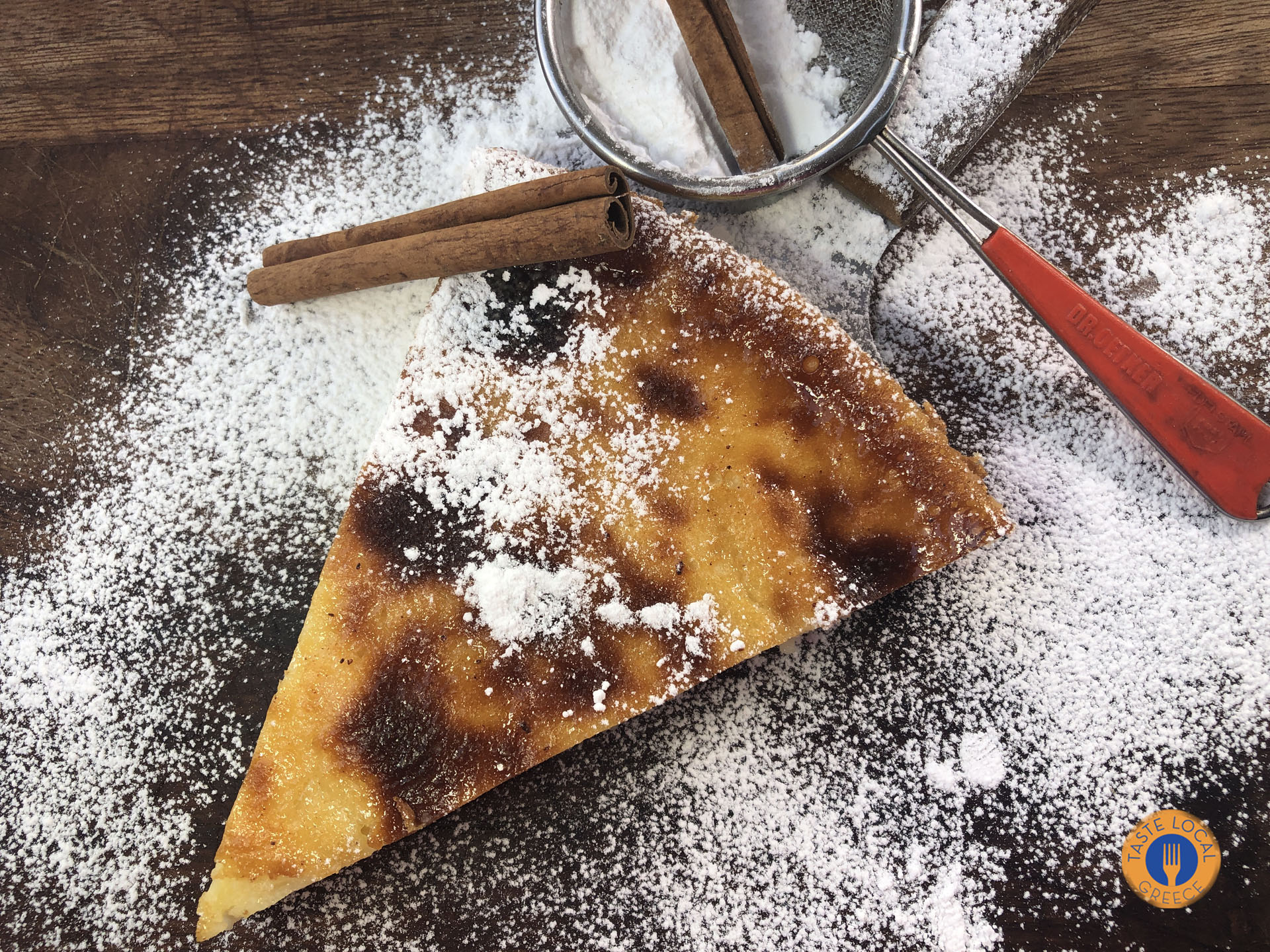
Text and photos by GiorgioGrigor

